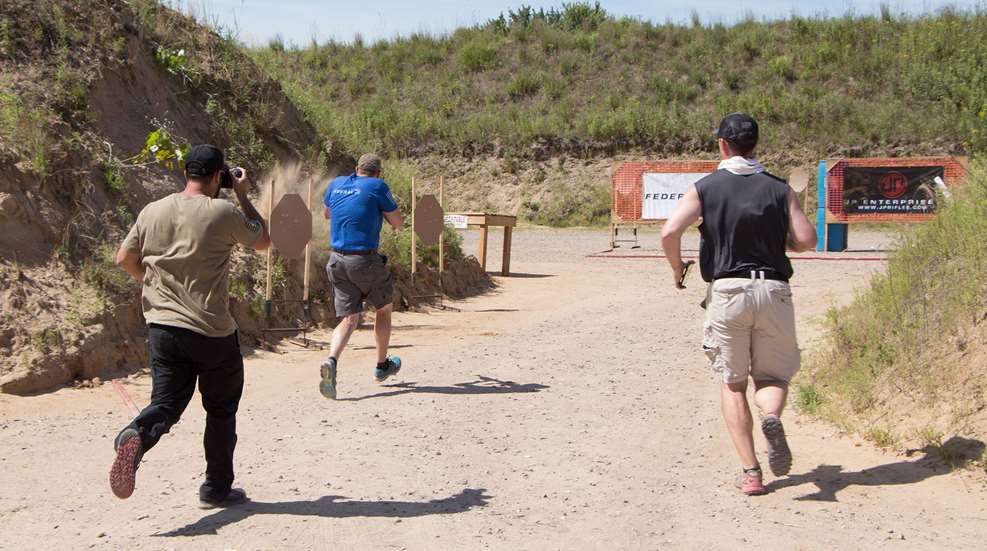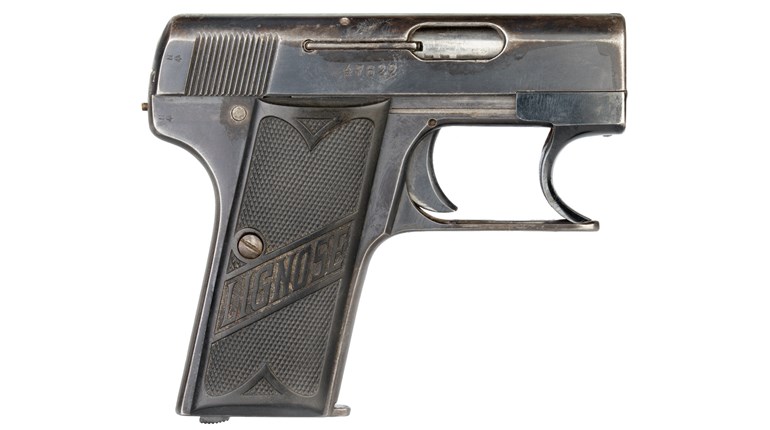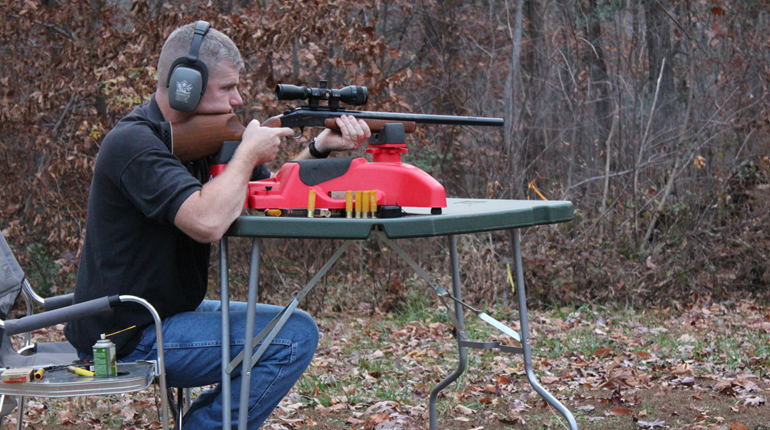
Working on shooting while moving allows one to maximize one’s speed while simultaneously honing vital marksmanship skills.
The Problem
You decided to upgrade your shooting skills by taking a class entitled “Shooting and Moving.” The class curriculum led you to believe that you would learn some “tactical secrets” that would make you fast on your feet while still maintaining the accuracy you were capable of in a stationary position. The problem was that you did not read the fine print, and put your own spin on the lesson you were about to receive before attending the class. Your perception was that you would learn to shoot accurately while actually moving from point “A” to point “B.” What was actually covered in the course was shooting from a stationary position, then moving to another stationary position with the gun pointed in a safe direction and the index finger off the trigger before engaging the next target. When questioning the team teaching the class about actually shooting while moving, you were told that you could not reliably hit anything without being in a solid shooting stance before pulling the trigger. That was the explanation given as to why we were taught to shoot, then move, then shoot again from a solid shooting stance. Your question is, can a person actually shoot accurately while in motion and, if so, exactly how that might be accomplished, seeing as it is an esoteric skill, even among instructors?
The Solution
One lesson to be learned from this situation is assume nothing. Ask questions before entering into a class whose learning objectives were not completely clear in the course curriculum.
There are quite a few variables that enter into play when discussing and integrating movement while simultaneously hitting a target. Aside from safety, time is near the top of the list to be considered. How fast does the target need to be negotiated? This can be determined by whether you are being shot at by an adversary or shooting a timed course of fire. Both are two considerations where time is a primary factor. Since the objective of shooting is hitting your target, accuracy stands right alongside time. While time is measured in minutes, seconds and fractions of seconds, accuracy has a greater degree of variables. A general rule is the bigger the target, the faster it can be shot because pinpoint accuracy is not necessary to achieve the objective. Distance from the target also plays an important part in weighing speed versus accuracy. Distance usually equates to time in your favor. Minimizing muzzle movement is important when engaging targets—as long as the muzzle hovers within the perimeter of the target, the target can be shot successfully. For consideration, a hit anywhere in the “A” zone or 10-ring of a paper target is still scored as a hit with maximum value; there’s no need for a sub-MOA group to achieve the objective. From a defensive perspective, upper center-mass of the human torso is considered as a hit sufficient to stop the threat.
Your job in these examples, and others, is to stabilize the muzzle on the target and operate the trigger as many times as necessary without interference in that stability. Smooth, fluid movement in a manner that allows speed along with stability of the muzzle is the objective of shooting while in the process of moving.
Conventional training in the law enforcement and military communities usually teach the “Shuffle Step” or the “Heel/Toe Roll-Over” methods of moving while shooting. The shuffle step is performed by sliding the lead foot forward in the direction of travel and then sliding the trailing foot to join it, repeated as necessary until the location of interest is reached. By maintaining constant contact with the traveled surface with both feet there is little likelihood of tripping and falling. This method, however, is painfully slow, particularly when time is of the essence.
The heel/toe roll-over method is a deliberate movement putting one foot in front of the other as in walking toward the target while firmly planting the heel first on the travel surface, then rolling the foot forward to pivot off the toes as the opposite heel touches down to execute the same movement. Again, repeat as necessary until the desired location is arrived upon. The heel/toe roll-over method offers more speed than the shuffle step but the potential of tripping is greatly increased, as is the degradation of muzzle stability on the target.
An alternate method that I refer to as the “Tea Cup” method is a viable option for most people with a minimum of practice. It is a simple process requiring only a tea cup and a liquid to fill the tea cup to the brim.
The objective is to hold the cup filled with water at arm’s length as you would a pistol and move fast and/or slow, over and around objects, without spilling any water. Filling the cup with hot water would create a pain penalty incentivizing the practitioner to be smooth and fluid in any movement. Stabilizing the tea cup in this manner equates to stabilizing the gun on the target when moving. The feet, legs and rest of the body adapt to what is needed for maximum stability without the need for conscious thought.
If you are a good dancer and your trigger control is clean, you should be able to shoot with the necessary accuracy whether stationary or on the move.





































